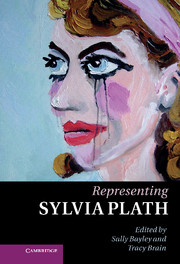Book contents
- Frontmatter
- Contents
- Illustrations
- Notes on contributors
- Acknowledgements
- Abbreviations
- Introduction
- Part I Contexts
- Part II Poetics and composition
- Part III Representation
- Chapter 9 Confession, contrition and concealment: evoking Plath in Ted Hughes’s Howls & Whispers
- Chapter 10 Fictionalizing Sylvia Plath
- Chapter 11 Primary representations
- Bibliography
- Index
- References
Chapter 10 - Fictionalizing Sylvia Plath
from Part III - Representation
Published online by Cambridge University Press: 07 September 2011
- Frontmatter
- Contents
- Illustrations
- Notes on contributors
- Acknowledgements
- Abbreviations
- Introduction
- Part I Contexts
- Part II Poetics and composition
- Part III Representation
- Chapter 9 Confession, contrition and concealment: evoking Plath in Ted Hughes’s Howls & Whispers
- Chapter 10 Fictionalizing Sylvia Plath
- Chapter 11 Primary representations
- Bibliography
- Index
- References
Summary
This chapter considers those moments where Plath becomes a character in somebody else’s text, whether a novel, a poem, a film or even a biography. Such a representation can be central and sustained, or momentary and incidental. It may involve describing Plath and her actions, or inhabiting her viewpoint, or inventing dialogue for her.
To fictionalize a real person in this way risks intrusion into the lives of people connected with her. Artists are often aware of the various problems involved in such intrusion. To consider such representations critically is necessarily to explore the ethical questions involved. It is not only to ask whether a work is written well or badly, but also what responsibilities, if any, the writer owes to accuracy and the feelings of people associated with the person depicted. In the course of such an investigation, one is led to questions about the boundary between fiction and biography.
- Type
- Chapter
- Information
- Representing Sylvia Plath , pp. 183 - 202Publisher: Cambridge University PressPrint publication year: 2011
- 2
- Cited by



